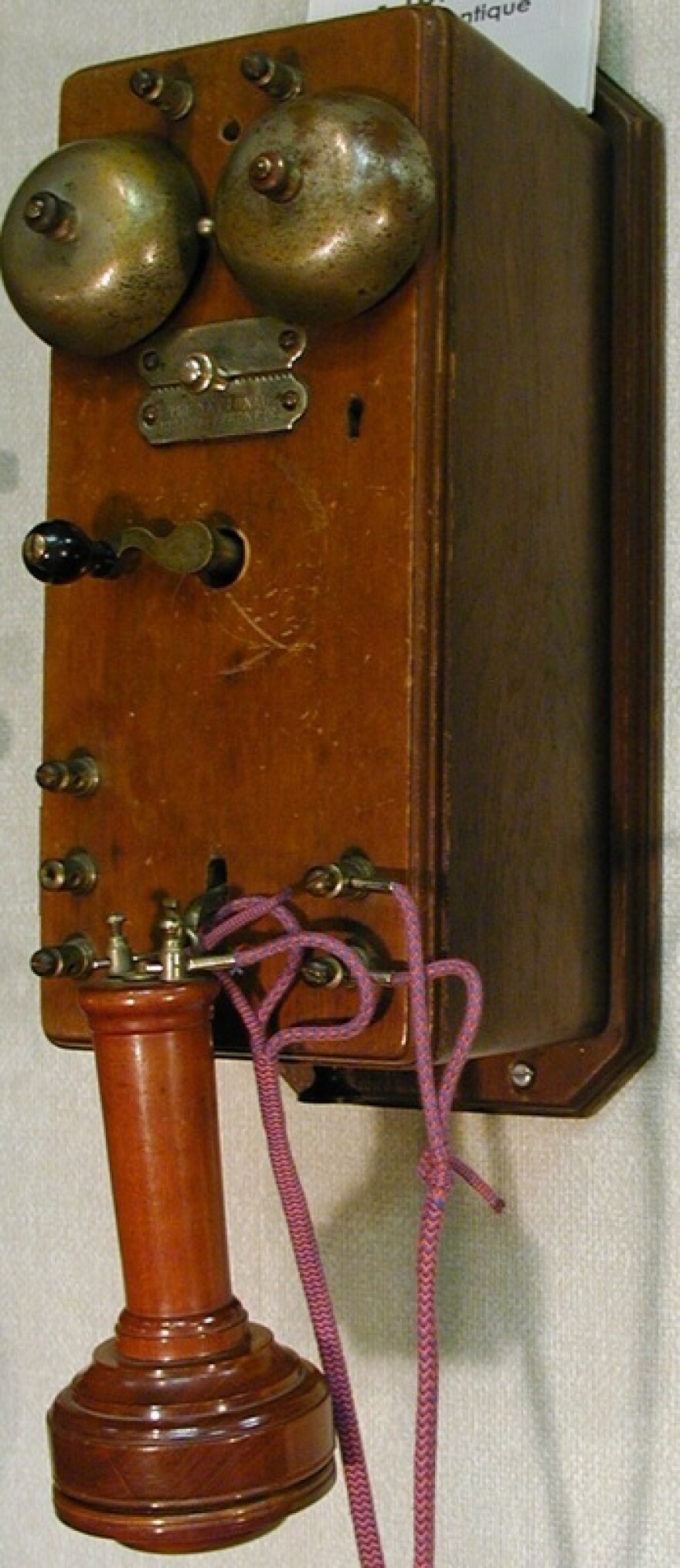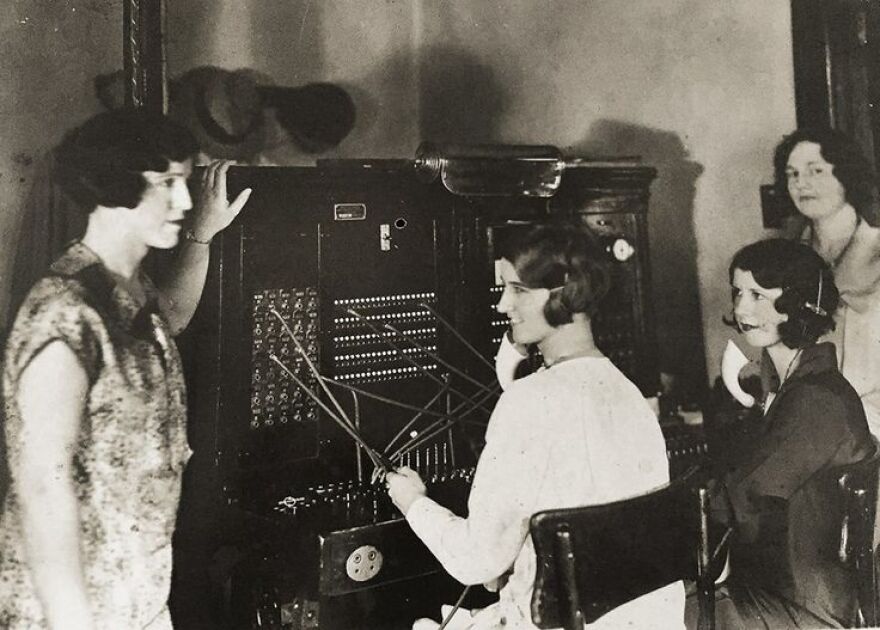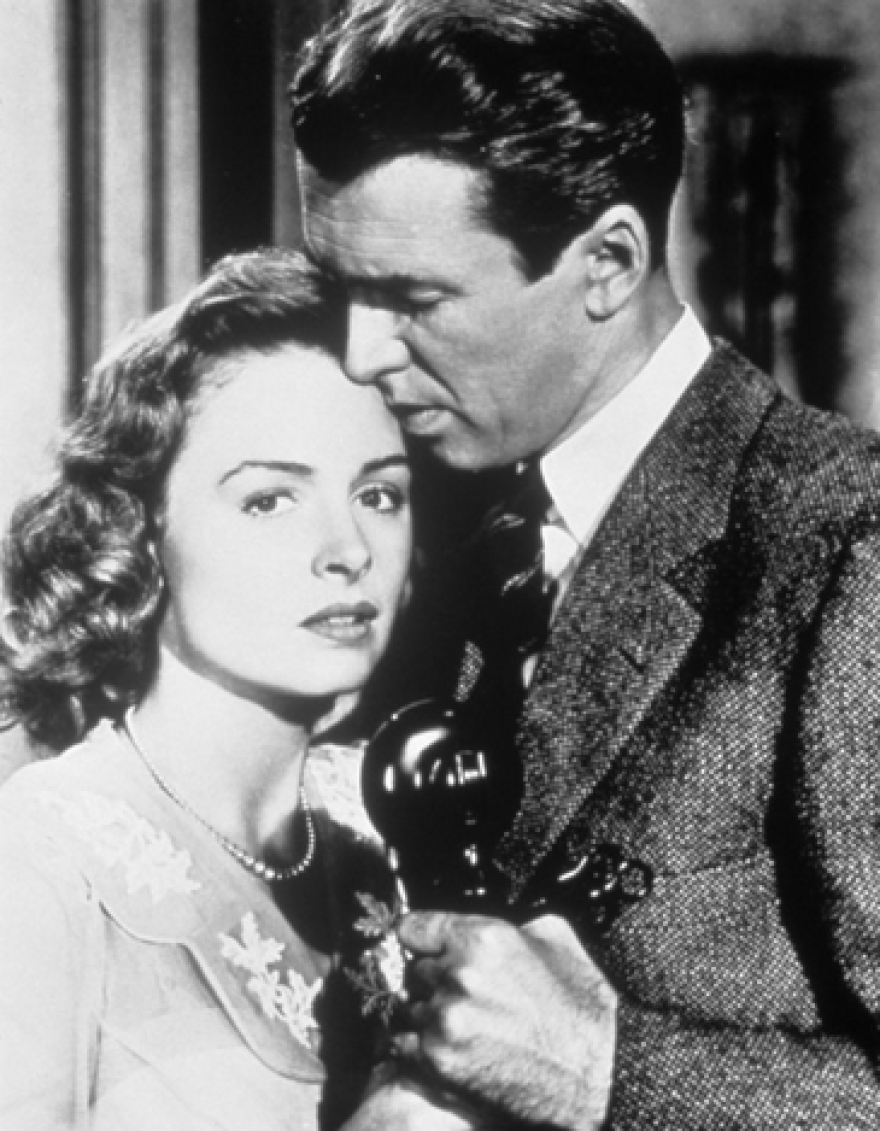To hear Paul Violette of the New Hampshire Telephone Museum tell the story, anyone who thinks today’s communication technology is far beyond the old telephone system doesn’t understand how it all works.
“Most people feel like if they have a cell phone or a smart phone that it’s totally wireless. It’s not true. It’s not wall-to-wall coverage,” he said.
A cell phone call is only wireless from the caller's phone to the nearest tower, Violette explained. Then, the system looks for the tower closest to the call's intended target, and the call goes wireless from that tower to the recipient's phone.

This is only the beginning of what Violette knows about telephones. They're practically part of his DNA, which is why he played a key role in establishing the New Hampshire Telephone Museum in his hometown of Warner.
Related: Word of Mouth talks to Rob Fleischman about how land lines aren't really land lines.
Violette's grandfather, Elmer Bartlett, became manager of the Merrimack County Telephone Company (MCT) in Warner in 1928. His father, Alderic “Dick” Violette, carried on the tradition, working for local small independent phone companies until he retired as the president of MCT in 1986. Paul Violette worked for the same company, eventually serving as its manager until the company sold in 2002.
Violette and Laura French, the museum’s executive director, like to say the history of the telephone is basically the history of telecommunications. It moves quickly from the telegraph to what Alexander Graham Bell called his “harmonic telegraph” – a device that allowed human voice to be transferred over distances – to the smart phones, tablets and devices that now transmit voice, video and the internet.

All those advances happened in fewer than 150 years, making the telephone one of history’s most transformative inventions. And while we tend to think of the telecom players as monoliths like the once-mighty Bell Telephone Company, in New Hampshire, companies like Merrimack County Telephone made telecommunications personal.
“It gets in your blood,” Violette said, sitting in a meeting room at the museum. “When I was four or five years old, I’d ride with my dad on the line truck (used to make repairs). I’d hold the flashlight for him when he climbed a pole when I was only eight or nine years old.”
Connecting To History
When you visit the museum, you’ll learn about “accidental” invention of the telephone by Alexander Graham Bell, see parts of his original device, and hear about his patent disputes with other inventors. You’ll also see original hand-crank wall phones that were first placed in homes.
As MCT’s first manager, Violette said, his grandfather installed these phones in local farmhouses.
“He put in every phone in town, he climbed poles, he put up the wires, he did bill collection, and he hired the switchboard operators.”
You’ll also learn about the importance of the switchboard operators. Early phone service was entirely dependent on these workers who connected calls from one person to another.
Many customers had “party line service,” with several customers sharing the same telephone line. When a switchboard operator received a call for one person, she would ring a special signal on the party line – for instance, two short rings and one long one – to indicate a call was intended for a particular customer.

This very personal service meant operators knew everyone in town – and almost all their personal business. That wasn’t seen as a bad thing. After all, if you needed a doctor late at night, or to find someone who had a good chocolate cake recipe, the operators were a valuable resource.
“They were like an early Google,” said Graham Gifford, the museum’s program coordinator.

In addition to the early wall devices, you'll also see a collection of candlestick phones, the type that are visible in classic films of the 1930's and 40's. These offered users the previously unimaginable convenience of portability, said Gifford, though that was limited by the length of the phone's cord.
You'll also learn how about a peculiar problem led to the invention of the rotary phone. It began when a Kansas City undertaker named Almon Brown Strowger was surprised by an unexpected drop in his business, and discovered the local switchboard operator was romantically involved with a new undertaker in town, and was directing all undertaker-related calls to her beau. Strowger took it upon himself to invent a way to allow people to call one another directly and, with a few magnets and some hat pins, he succeeded.
The Telephone Museum also highlights the many design alterations that occurred in the 1950's and 1960's, after plastics became readily available. Phone companies went wild with the material, introducing lighter models in a variety of colors as well as novelty phones like the “Princess,” designed for “young ladies,” and several versions of the Mickey Mouse phone.
The museum doesn't ignore the advent of cell phones. In fact, you'll get a chance to see one of the first, a model from the 1970's. It’s about the size and weight of a large brick and had to be carried in a bag. It also cost about $4000.

You can take a self-guided tour of the New Hampshire Telephone Museum, or you can choose a hands-on, guided visit. In addition to the large collection of phones, there’s a working switchboard, a group of linemen’s tools, and a large wooden phone booth that was once used by a judge as his personal office.
Either way, in the span of an hour or two, you’ll learn how the desire to communicate inspired 150 years of invention, technological progress, and New Hampshire's surprisingly personal connection to the telephone.
Ray Carbone is a New Hampshire writer whose byline has appeared on a variety of regional media platforms including the Boston Globe/Boston.com, New Hampshire Business Review/NHBR.com and New England Boating magazine. His new book, “Legendary Locals of New Hampshire’s Lakes Region,” is scheduled to be released this June. Carbone can be reached at raycarbone@yahoo.com







